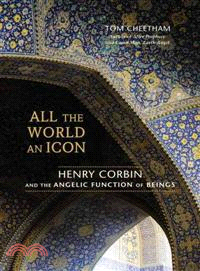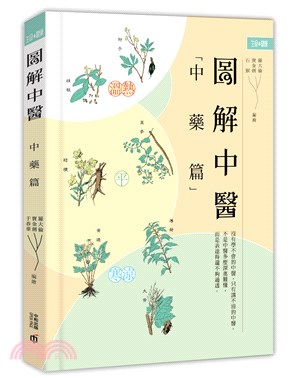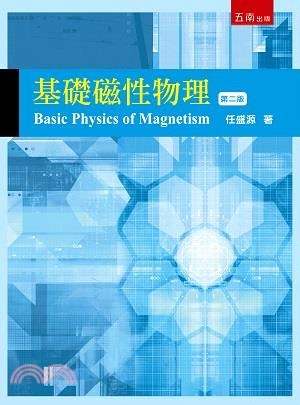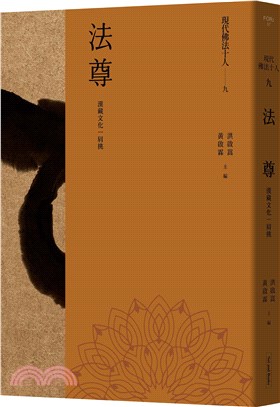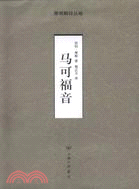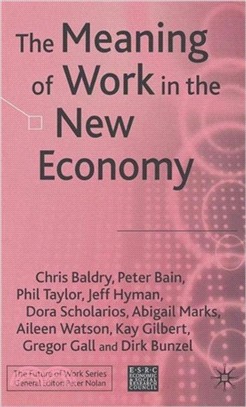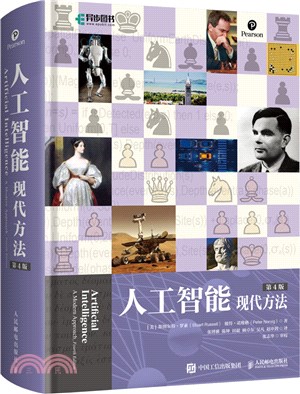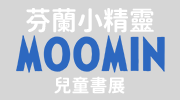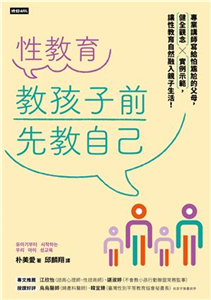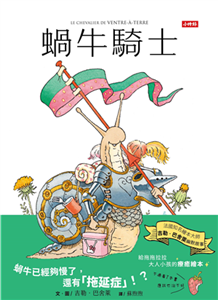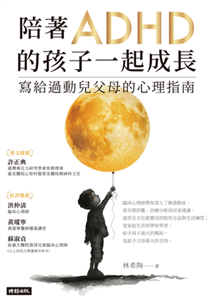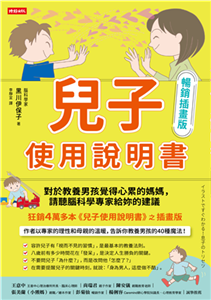CHEMICAL PROCESS DESIGN - COMPUTER-AIDED CASE STUDIES
商品資訊
ISBN13:9783527314034
出版社:JOHN WILEY & SONS;LTD
作者:DIMIAN
出版日:2008/02/20
裝訂/頁數:精裝/527頁
定價
:NT$ 11925 元優惠價
:90 折 10733 元
若需訂購本書,請電洽客服 02-25006600[分機130、131]。
商品簡介
作者簡介
名人/編輯推薦
目次
商品簡介
This practical how-to-do book deals with the design of sustainable chemical processes by means of systematic methods aided by computer simulation. Ample case studies illustrate generic creative issues, as well as the efficient use of simulation techniques, with each one standing for an important issue taken from practice.
The didactic approach guides readers from basic knowledge to mastering complex flow-sheets, starting with chemistry and thermodynamics, via process synthesis, efficient use of energy and waste minimization, right up to plant-wide control and process dynamics.
The simulation results are compared with flow-sheets and performance indices of actual industrial licensed processes, while the complete input data for all the case studies is also provided, allowing readers to reproduce the results with their own simulators.
For everyone interested in the design of innovative chemical processes.
The didactic approach guides readers from basic knowledge to mastering complex flow-sheets, starting with chemistry and thermodynamics, via process synthesis, efficient use of energy and waste minimization, right up to plant-wide control and process dynamics.
The simulation results are compared with flow-sheets and performance indices of actual industrial licensed processes, while the complete input data for all the case studies is also provided, allowing readers to reproduce the results with their own simulators.
For everyone interested in the design of innovative chemical processes.
作者簡介
Alexandre C. Dimian has been Associate Professor for Process Design and Integration at the University of Amsterdam, The Netherlands, since 1993. He wrote his PhD thesis in chemical engineering at the Technical University of Bucharest, Romania, and TU Hanover, Germany. He worked as a consultant for computer applications in process industries for 12 years, has realized numerous industrial projects, and has more than 100 refereed scientific papers as well as five books and three patents to his name. His research interests focus on the computer-aided design of chemical processes, and, more recently, on biofuels and biorefinery applications.
C. Sorin Bildea holds two MSc degrees in chemical engineering and automatics and received his PhD from the University of Amsterdam, The Netherlands. Following posts as Assistant Professor at Delft University of Technology and a researcher at the University of Amsterdam, the Netherlands, he is currently Associate Professor at the University Politehnica Bucharest, Romania, where he teaches process control and various other chemical engineering courses. He has more than 50 published papers and conference presentations to his name and his research interests are in the fields of nonlinear dynamics and integration between process design and process control.
C. Sorin Bildea holds two MSc degrees in chemical engineering and automatics and received his PhD from the University of Amsterdam, The Netherlands. Following posts as Assistant Professor at Delft University of Technology and a researcher at the University of Amsterdam, the Netherlands, he is currently Associate Professor at the University Politehnica Bucharest, Romania, where he teaches process control and various other chemical engineering courses. He has more than 50 published papers and conference presentations to his name and his research interests are in the fields of nonlinear dynamics and integration between process design and process control.
名人/編輯推薦
"Each chapter of the book contains an up-to-date well documented list of references. The book is written in contemporary way and includes many illustrations which make the text more useful for specialists in chemical process design." (Environmental Engineering and Management Journal, July/August 2008)
"I believe that the book will be a valuable addition to the currently available literature—The authors are respected and well-regarded in their field of research."
—Professor Marquart, RWTH Aachen, Process Systems Engineering, Aachen, Germany
"I believe that the book will be a valuable addition to the currently available literature—The authors are respected and well-regarded in their field of research."
—Professor Marquart, RWTH Aachen, Process Systems Engineering, Aachen, Germany
目次
Preface.
1 Integrated Process Design.
1.1 Motivation and Objectives.
1.2 Sustainable Process Design.
1.3 Integrated Process Design.
1.4 Summary.
2 Process Synthesis by Hierarchical Approach.
2.1 Hierarchical Approach of Process Design.
2.2 Basis of Design.
2.3 Chemistry and Thermodynamics.
2.4 Input/Output Analysis.
2.5 Reactor/Separation/Recycle Structure.
2.6 Separation System Design.
2.7 Optimization of Material Balance.
2.8 Process Integration.
2.9 Integration of Design and Control.
2.10 Summary.
3 Synthesis of Separation System.
3.1 Methodology.
3.2 Vapor Recovery and Gas-Separation System.
3.3 Liquid-Separation System.
3.4 Separation of Zeotropic Mixtures by Distillation.
3.5 Enhanced Distillation.
3.6 Hybrid Separations.
3.7 Azeotropic Distillation.
3.8 Reactive Separations.
3.9 Summary.
4 Reactor/Separation/Recycle Systems.
4.1 Introduction.
4.2 Plantwide Control Structures.
4.3 Processes Involving One Reactant.
4.4 Processes Involving Two Reactants.
4.5 The Effect of the Heat of Reaction.
4.6 Example – Toluene Hydrodealkylation Process.
4.7 Conclusions.
5 Phenol Hydrogenation to Cyclohexanone.
5.1 Basis of Design.
5.2 Chemical Reaction Analysis.
5.3 Thermodynamic Analysis.
5.4 Input/Output Structure.
5.5 Reactor/Separation/Recycle Structure.
5.6 Separation System.
5.7 Material-Balance Flowsheet.
5.8 Energy Integration.
5.9 One-Reactor Process.
5.10 Process Dynamics and Control.
5.11 Environmental Impact.
5.12 Conclusions.
6 Alkylation of Benzene by Propylene to Cumene.
6.1 Basis of Design.
6.2 Reaction-Engineering Analysis.
6.3 Reactor/Separator/Recycle Structure.
6.4 Mass Balance and Simulation.
6.5 Energy Integration.
6.6 Complete Process Flowsheet.
6.7 Reactive Distillation Process.
6.8 Conclusions.
7 Vinyl Chloride Monomer Process.
7.1 Basis of Design.
7.2 Reactions and Thermodynamics.
7.3 Chemical-Reaction Analysis.
7.4 Reactor Simulation.
7.5 Separation System.
7.6 Material-Balance Simulation.
7.7 Energy Integration.
7.8 Dynamic Simulation and Plantwide Control.
7.9 Plantwide Control of Impurities.
7.10 Conclusions.
8 Fatty-Ester Synthesis by Catalytic Distillation.
8.1 Introduction.
8.2 Methodology.
8.3 Esterifi cation of Lauric Acid with 2-Ethylhexanol.
8.4 Esterifi cation of Lauric Acid with Methanol.
8.5 Esterifi cation of Lauric Acid with Propanols.
8.6 Conclusions.
9 Isobutane Alkylation.
9.1 Introduction.
9.2 Basis of Design.
9.3 Input–Output Structure.
9.4 Reactor/Separation/Recycle.
9.5 Separation Section.
9.6 Plantwide Control and Dynamic Simulation.
9.7 Discussion.
9.8 Conclusions.
10 Vinyl Acetate Monomer Process.
10.1 Basis of Design.
10.2 Reactions and Thermodynamics.
10.3 Input–Output Analysis.
10.4 Reactor/Separation/Recycles.
10.5 Separation System.
10.6 Material-Balance Simulation.
10.7 Energy Integration.
10.8 Plantwide Control.
10.9 Conclusions.
11 Acrylonitrile by Propene Ammoxidation.
11.1 Problem Description.
11.2 Reactions and Thermodynamics.
11.3 Chemical-Reactor Analysis.
11.4 The First Separation Step.
11.5 Liquid-Separation System.
11.6 Heat Integration.
11.7 Water Minimization.
11.8 Emissions and Waste.
11.9 Final Flowsheet.
11.10 Further Developments.
11.11 Conclusions.
12 Biochemcial Process for NOx Removal.
12.1 Introduction.
12.2 Basis of Design.
12.3 Process Selection.
12.4 The Mathematical Model.
12.5 Sizing of the Absorber and Bioreactor.
12.6 Flowsheet and Process Control.
12.7 Conclusions.
13 PVC Manufacturing by Suspension Polymerization.
13.1 Introduction.
13.2 Large-Scale Reactor Technology.
13.3 Kinetics of Polymerization.
13.4 Molecular-Weight Distribution.
13.5 Kinetic Constants.
13.6 Reactor Design.
13.7 Design of the Reactor.
13.8 Conclusions.
14 Biodiesel Manufacturing.
14.1 Introduction to Biofuels.
14.2 Fundamentals of Biodiesel Manufacturing.
14.3 Manufacturing Processes.
14.4 Kinetics and Catalysis.
14.5 Reaction-Engineering Issues.
14.6 Phase-Separation Issues.
14.7 Application.
14.8 Conclusions.
15 Bioethanol Manufacturing.
15.1 Introduction.
15.2 Bioethanol as Fuel.
15.3 Economic Aspects.
15.4 Ecological Aspects.
15.5 Raw Materials.
15.6 Biorefi nery Concept.
15.7 Fermentation.
15.8 Manufacturing Technologies.
15.9 Process Design: Ethanol from Lignocellulosic Biomass.
15.10 Conclusions.
Appendix A Residue Curve Maps for Reactive Mixtures.
Appendix B Heat-Exchanger Design.
Appendix C Materials of Construction.
Appendix D Saturated Steam Properties.
Appendix E Vapor Pressure of Some Hydrocarbons.
Appendix F Vapor Pressure of Some Organic Components.
Appendix G Conversion Factors to SI Units.
Index.
1 Integrated Process Design.
1.1 Motivation and Objectives.
1.2 Sustainable Process Design.
1.3 Integrated Process Design.
1.4 Summary.
2 Process Synthesis by Hierarchical Approach.
2.1 Hierarchical Approach of Process Design.
2.2 Basis of Design.
2.3 Chemistry and Thermodynamics.
2.4 Input/Output Analysis.
2.5 Reactor/Separation/Recycle Structure.
2.6 Separation System Design.
2.7 Optimization of Material Balance.
2.8 Process Integration.
2.9 Integration of Design and Control.
2.10 Summary.
3 Synthesis of Separation System.
3.1 Methodology.
3.2 Vapor Recovery and Gas-Separation System.
3.3 Liquid-Separation System.
3.4 Separation of Zeotropic Mixtures by Distillation.
3.5 Enhanced Distillation.
3.6 Hybrid Separations.
3.7 Azeotropic Distillation.
3.8 Reactive Separations.
3.9 Summary.
4 Reactor/Separation/Recycle Systems.
4.1 Introduction.
4.2 Plantwide Control Structures.
4.3 Processes Involving One Reactant.
4.4 Processes Involving Two Reactants.
4.5 The Effect of the Heat of Reaction.
4.6 Example – Toluene Hydrodealkylation Process.
4.7 Conclusions.
5 Phenol Hydrogenation to Cyclohexanone.
5.1 Basis of Design.
5.2 Chemical Reaction Analysis.
5.3 Thermodynamic Analysis.
5.4 Input/Output Structure.
5.5 Reactor/Separation/Recycle Structure.
5.6 Separation System.
5.7 Material-Balance Flowsheet.
5.8 Energy Integration.
5.9 One-Reactor Process.
5.10 Process Dynamics and Control.
5.11 Environmental Impact.
5.12 Conclusions.
6 Alkylation of Benzene by Propylene to Cumene.
6.1 Basis of Design.
6.2 Reaction-Engineering Analysis.
6.3 Reactor/Separator/Recycle Structure.
6.4 Mass Balance and Simulation.
6.5 Energy Integration.
6.6 Complete Process Flowsheet.
6.7 Reactive Distillation Process.
6.8 Conclusions.
7 Vinyl Chloride Monomer Process.
7.1 Basis of Design.
7.2 Reactions and Thermodynamics.
7.3 Chemical-Reaction Analysis.
7.4 Reactor Simulation.
7.5 Separation System.
7.6 Material-Balance Simulation.
7.7 Energy Integration.
7.8 Dynamic Simulation and Plantwide Control.
7.9 Plantwide Control of Impurities.
7.10 Conclusions.
8 Fatty-Ester Synthesis by Catalytic Distillation.
8.1 Introduction.
8.2 Methodology.
8.3 Esterifi cation of Lauric Acid with 2-Ethylhexanol.
8.4 Esterifi cation of Lauric Acid with Methanol.
8.5 Esterifi cation of Lauric Acid with Propanols.
8.6 Conclusions.
9 Isobutane Alkylation.
9.1 Introduction.
9.2 Basis of Design.
9.3 Input–Output Structure.
9.4 Reactor/Separation/Recycle.
9.5 Separation Section.
9.6 Plantwide Control and Dynamic Simulation.
9.7 Discussion.
9.8 Conclusions.
10 Vinyl Acetate Monomer Process.
10.1 Basis of Design.
10.2 Reactions and Thermodynamics.
10.3 Input–Output Analysis.
10.4 Reactor/Separation/Recycles.
10.5 Separation System.
10.6 Material-Balance Simulation.
10.7 Energy Integration.
10.8 Plantwide Control.
10.9 Conclusions.
11 Acrylonitrile by Propene Ammoxidation.
11.1 Problem Description.
11.2 Reactions and Thermodynamics.
11.3 Chemical-Reactor Analysis.
11.4 The First Separation Step.
11.5 Liquid-Separation System.
11.6 Heat Integration.
11.7 Water Minimization.
11.8 Emissions and Waste.
11.9 Final Flowsheet.
11.10 Further Developments.
11.11 Conclusions.
12 Biochemcial Process for NOx Removal.
12.1 Introduction.
12.2 Basis of Design.
12.3 Process Selection.
12.4 The Mathematical Model.
12.5 Sizing of the Absorber and Bioreactor.
12.6 Flowsheet and Process Control.
12.7 Conclusions.
13 PVC Manufacturing by Suspension Polymerization.
13.1 Introduction.
13.2 Large-Scale Reactor Technology.
13.3 Kinetics of Polymerization.
13.4 Molecular-Weight Distribution.
13.5 Kinetic Constants.
13.6 Reactor Design.
13.7 Design of the Reactor.
13.8 Conclusions.
14 Biodiesel Manufacturing.
14.1 Introduction to Biofuels.
14.2 Fundamentals of Biodiesel Manufacturing.
14.3 Manufacturing Processes.
14.4 Kinetics and Catalysis.
14.5 Reaction-Engineering Issues.
14.6 Phase-Separation Issues.
14.7 Application.
14.8 Conclusions.
15 Bioethanol Manufacturing.
15.1 Introduction.
15.2 Bioethanol as Fuel.
15.3 Economic Aspects.
15.4 Ecological Aspects.
15.5 Raw Materials.
15.6 Biorefi nery Concept.
15.7 Fermentation.
15.8 Manufacturing Technologies.
15.9 Process Design: Ethanol from Lignocellulosic Biomass.
15.10 Conclusions.
Appendix A Residue Curve Maps for Reactive Mixtures.
Appendix B Heat-Exchanger Design.
Appendix C Materials of Construction.
Appendix D Saturated Steam Properties.
Appendix E Vapor Pressure of Some Hydrocarbons.
Appendix F Vapor Pressure of Some Organic Components.
Appendix G Conversion Factors to SI Units.
Index.
主題書展
更多
主題書展
更多書展今日66折
您曾經瀏覽過的商品
購物須知
外文書商品之書封,為出版社提供之樣本。實際出貨商品,以出版社所提供之現有版本為主。部份書籍,因出版社供應狀況特殊,匯率將依實際狀況做調整。
無庫存之商品,在您完成訂單程序之後,將以空運的方式為你下單調貨。為了縮短等待的時間,建議您將外文書與其他商品分開下單,以獲得最快的取貨速度,平均調貨時間為1~2個月。
為了保護您的權益,「三民網路書店」提供會員七日商品鑑賞期(收到商品為起始日)。
若要辦理退貨,請在商品鑑賞期內寄回,且商品必須是全新狀態與完整包裝(商品、附件、發票、隨貨贈品等)否則恕不接受退貨。


